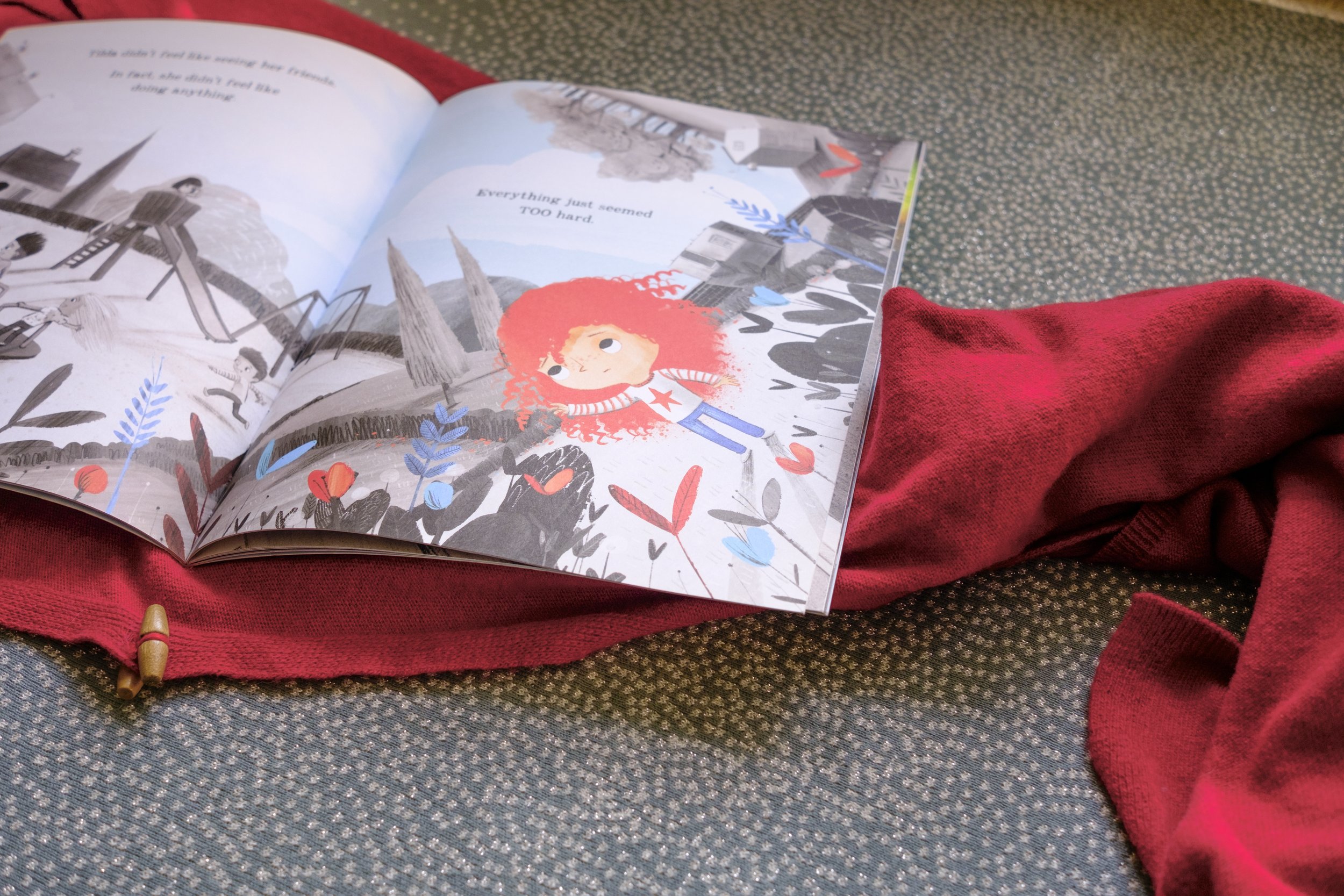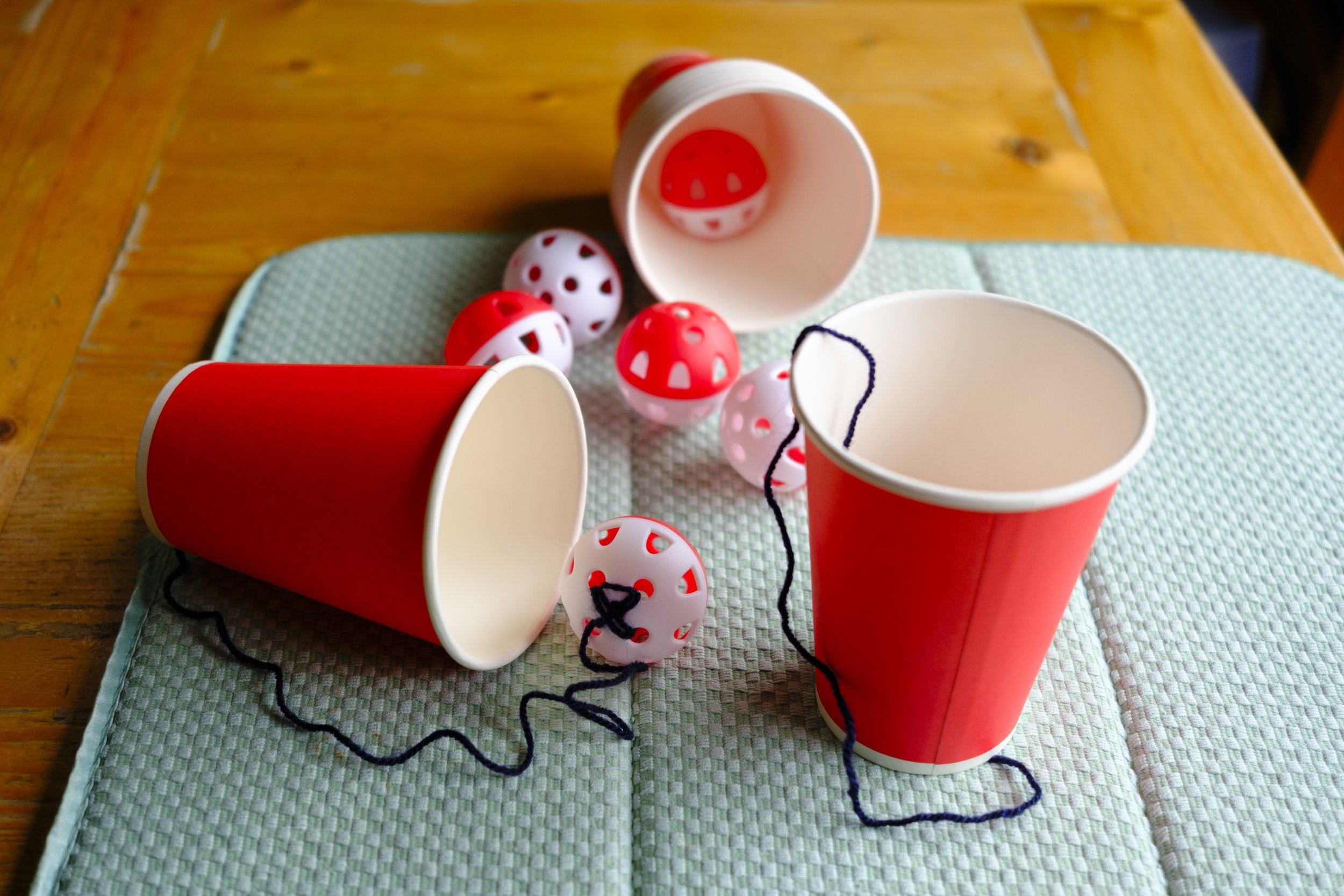
Tilda tries again by tom percival
Introduce the children to Tilda, the main character of this book, by looking at the front cover together. Some may spot the ladybird who plays an important role in Tilda learning to “try again”.
Read the blurb and discuss what may have happened to turn Tilda’s world “completely upside down”. You may want to prepare bereaved children before reading this book that the illustrations suggest that Tilda’s daddy has left. It is likely that they will understand this as he has died.
Key Questions and discussion points:
Read and talk about Tom’s letter to his reader at the beginning of this book. What do you think to his advice?
What makes you feel happy? Create a list with each child of all the things which make them feel happy. This prepares the space nicely for exploring difficult feelings and triggering moments.
This book can be used for two sessions. In your first one create a poster of activities and things which make each child happy around a outline drawing of each of them. This is an emotional first aid kit for what they can do when the hurt they feel is emotional rather than physical (although it can transfer to the physical as well). The child bereavement charity Winston’s Wish has an excellent template and guidance that you could use instead for this first activity. Your second session could be making the ball and cup game detailed below.
Ask, Is there anything that you are finding difficult to do right now? Discuss but don’t list the children’s ideas here to keep it conversational. As a group, support each other by thinking of ways to break each one down into small chunks to make them more achievable. Discuss how it’s important to keep doing things that make us feel good even though we are grieving.

Activity: cup and ball game
This activity is a chance to discuss all the things that may feel challenging for the bereaved child right now. These could be grief related but don’t necessarily need to be. Like the ladybird and Tilda in the book, this is about trying and perhaps breaking a challenge down into smaller chunks.
Each child will need a paper cup, a ball (small airflow balls work well) and a length of cut wool or string.
Depending on the age and need of the children you are working with, you could decorate the paper cup or not. it’s the chat whilst decorating the cup which is more important than what each child chooses to put onto their cup.
If you choose to decorate the cup, the focus could be on what the child would like to be able to do, grief related or not.
Alternatively, it could be an opportunity for the child to draw on what makes them happy - as a self care exercise.
Make two small holes with a pencil in the bottom of the cup and thread an end of the wool/string through one hole and then the other so that you can tie a knot in the wool/string to hold it tight to the cup.
Tie the other end of the wool or string to the ball (airflow balls will make this easier than a solid ball - use a few holes to thread the string through until you’re happy it’ll hold tight. You could use a needle to guide the thread.)
You’re ready to play the game! Hold the cup in one or two hands and gently start to swing the ball. Pick up the pace until you’re able to lift the ball right up and try to catch it into the cup.
Ending the session:
Tilda’s story shows the importance of trying again when life feels as though it has been turned upside down. It’s about giving things a go and building resilience. The two activities outlined above encourage children to identify what makes them happy and what makes them feel challenged. It’s important to feel happy and have an emotional first aid kit to go to when our emotions are triggered and we feel overwhelmed. The death of a significant person in our lives can make us feel many different emotions and every single one is ok. Remind children that it is important to find someone they trust and like to talk to when this happens.
End the session by reading the author’s letter to the reader at the front of the book. Discuss their thoughts on his ideas and reflect on how much work they have done on the first two bullet points of his advice. Read the third one together: Look after yourself! Get enough sleep, exercise and healthy food. and discuss what this means.
